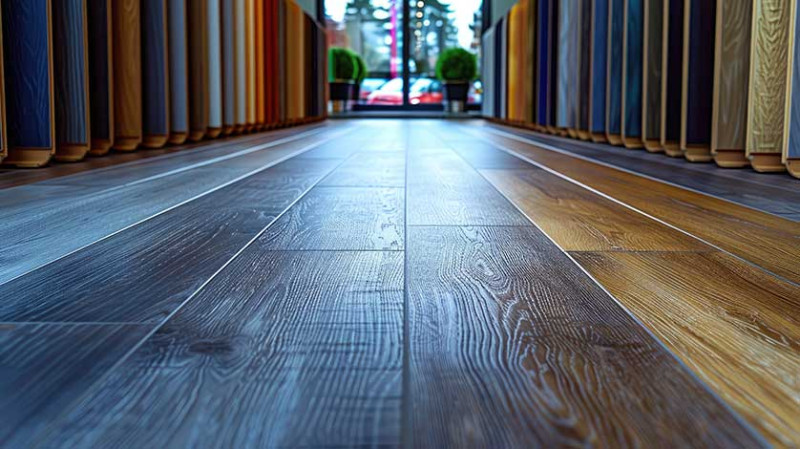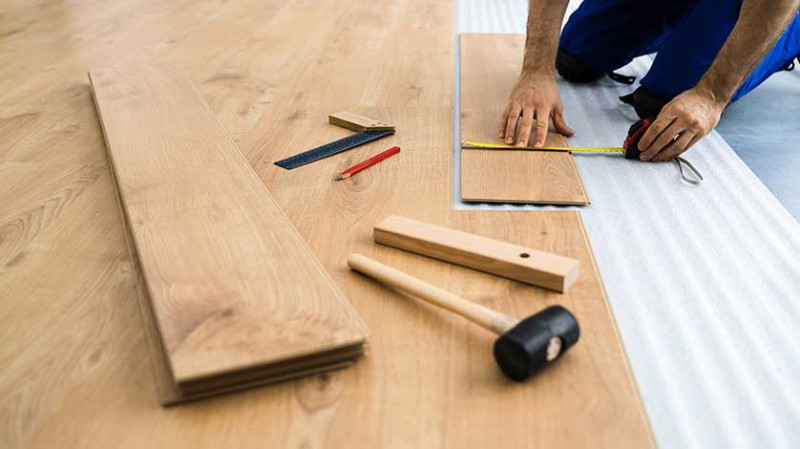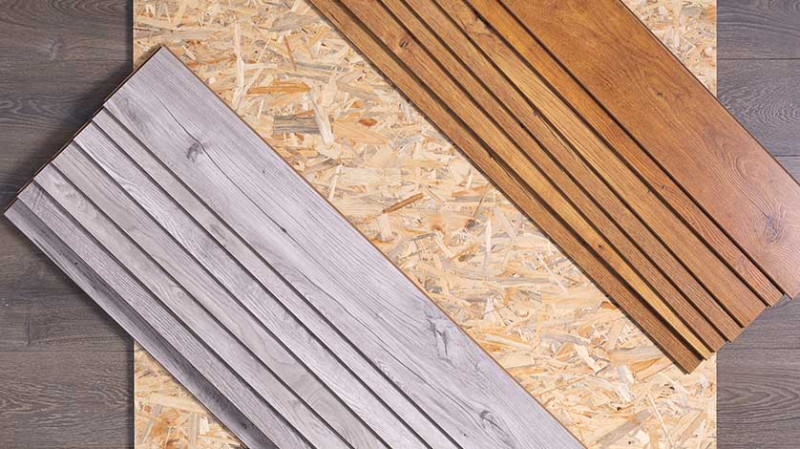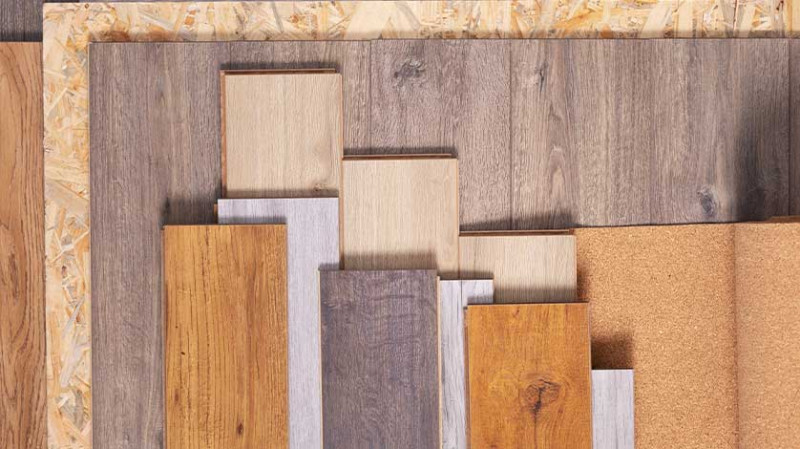
In the ever-evolving landscape of home design, sustainability has emerged as a cornerstone of modern architecture and interior design. As we step into 2025, the demand for eco-friendly materials has surged, leading to a revolution in flooring options that not only enhance the aesthetic appeal of homes but also contribute to a healthier planet. This blog post delves into the innovative sustainable materials that are transforming flooring choices, the benefits they offer, and how they align with the growing eco-conscious mindset of homeowners.
The Rise of Sustainable Flooring
Understanding Sustainable Flooring
Sustainable flooring refers to materials that are sourced, manufactured, and installed in ways that minimize environmental impact. This includes using renewable resources, reducing waste, and ensuring that the production processes are energy-efficient. As consumers become more aware of their ecological footprint, the demand for sustainable flooring options has skyrocketed.
The Eco-Conscious Consumer
In 2025, the eco-conscious consumer is not just a trend; it’s a lifestyle. Homeowners are increasingly prioritizing sustainability in their purchasing decisions. According to recent studies, over 70% of consumers are willing to pay more for products that are environmentally friendly. This shift in consumer behavior has prompted manufacturers to innovate and provide a range of sustainable flooring options that cater to this growing market.
Top Sustainable Flooring Materials of 2025
1. Bamboo Flooring
Bamboo has long been heralded as a sustainable alternative to traditional hardwood flooring. It is a fast-growing grass that can be harvested every three to five years, making it a highly renewable resource. In 2025, bamboo flooring has evolved to include a variety of styles, colors, and finishes, allowing homeowners to achieve the desired aesthetic without compromising on sustainability.
Benefits of Bamboo Flooring
- Durability: Bamboo is incredibly strong and resistant to wear, making it suitable for high-traffic areas.
- Low VOC Emissions: Many bamboo flooring options are treated with low or no volatile organic compounds (VOCs), contributing to better indoor air quality.
- Aesthetic Versatility: Available in various finishes, bamboo can complement any design style, from modern to rustic.
2. Cork Flooring
Cork flooring is another sustainable option that has gained popularity in 2025. Harvested from the bark of cork oak trees, this material is renewable and biodegradable. The harvesting process does not harm the tree, allowing it to continue growing and producing cork for decades.
Benefits of Cork Flooring
- Natural Insulation: Cork has excellent thermal and acoustic insulation properties, making it a comfortable choice for homes.
- Hypoallergenic: Cork is resistant to mold, mildew, and pests, making it an ideal choice for allergy sufferers.
- Unique Aesthetic: With its distinctive texture and natural patterns, cork flooring adds a unique touch to any space.
3. Reclaimed Wood Flooring
Reclaimed wood flooring is sourced from old buildings, barns, and other structures, giving new life to materials that would otherwise go to waste. In 2025, reclaimed wood has become a sought-after choice for homeowners looking to add character and history to their spaces.
Benefits of Reclaimed Wood Flooring
- Environmental Impact: By using reclaimed wood, homeowners reduce the demand for new lumber, helping to preserve forests.
- Unique Character: Each piece of reclaimed wood has its own story, adding a unique charm to any room.
- Durability: Older wood is often denser and more durable than new wood, making it a long-lasting flooring option.
4. Linoleum Flooring
Linoleum is a natural flooring material made from renewable resources such as linseed oil, cork dust, and wood flour. In 2025, linoleum has seen a resurgence in popularity due to its eco-friendly properties and modern design options.
Benefits of Linoleum Flooring
- Biodegradable: Unlike many synthetic flooring options, linoleum is fully biodegradable at the end of its life cycle.
- Low Maintenance: Linoleum is easy to clean and maintain, making it a practical choice for busy households.
- Variety of Designs: Available in a wide range of colors and patterns, linoleum can fit into any design scheme.
5. Recycled Vinyl Flooring
Recycled vinyl flooring is made from post-consumer and post-industrial waste, making it a sustainable choice for modern homes. In 2025, advancements in technology have improved the quality and design of recycled vinyl, making it a popular option for homeowners.
Benefits of Recycled Vinyl Flooring
- Water Resistance: Vinyl is naturally water-resistant, making it suitable for kitchens and bathrooms.
- Affordability: Recycled vinyl flooring is often more affordable than other sustainable options, making it accessible to a wider audience.
- Design Flexibility: With a vast array of colors and patterns, recycled vinyl can mimic the look of natural materials like wood and stone.
The Benefits of Choosing Sustainable Flooring
Environmental Impact
One of the most significant advantages of sustainable flooring is its positive impact on the environment. By choosing eco-friendly materials, homeowners can reduce their carbon footprint, conserve natural resources, and contribute to a healthier planet.
Health Benefits
Sustainable flooring options often have lower levels of harmful chemicals and VOCs, leading to improved indoor air quality. This is particularly important for families with children, pets, or individuals with allergies or respiratory issues.
Aesthetic Appeal
Sustainable flooring materials offer a unique aesthetic that can enhance the overall design of a home. With a variety of styles, colors, and textures available, homeowners can create beautiful spaces that reflect their personal style while being environmentally responsible.
Long-Term Cost Savings
While the initial investment in sustainable flooring may be higher than traditional options, the long-term savings can be significant. Many sustainable materials are more durable and require less maintenance, leading to lower replacement and upkeep costs over time.
How to Choose the Right Sustainable Flooring for Your Home
Assess Your Needs
Before selecting sustainable flooring, consider the specific needs of your home. Factors such as foot traffic, moisture levels, and the overall design aesthetic should influence your decision.
Research Your Options
Take the time to research different sustainable flooring materials and their benefits. Look for reputable manufacturers that prioritize eco-friendly practices and transparency in their sourcing and production processes.
Consider Installation and Maintenance
Some sustainable flooring options may require professional installation, while others can be installed as a DIY project. Additionally, consider the maintenance requirements of each material to ensure it aligns with your lifestyle.
Seek Professional Advice
If you’re unsure about which sustainable flooring option is best for your home, consult with a professional interior designer or flooring specialist. They can provide valuable insights and help you make an informed decision.
The Future of Sustainable Flooring
As we move further into 2025 and beyond, the trend toward sustainable flooring is expected to continue growing. Innovations in technology and materials will likely lead to even more eco-friendly options, making it easier for homeowners to make sustainable choices.
The Role of Technology
Advancements in technology are paving the way for new sustainable materials and production methods. From improved recycling processes to the development of bio-based materials, the future of flooring is bright for eco-conscious consumers.
The Importance of Education
As the market for sustainable flooring expands, education will play a crucial role in helping consumers make informed choices. Manufacturers, retailers, and designers must work together to raise awareness about the benefits of sustainable flooring and the importance of eco-friendly practices.
Conclusion
In 2025, the revolution of sustainable flooring is not just a trend; it’s a movement toward a more eco-conscious way of living. With a variety of innovative materials available, homeowners can create beautiful, functional spaces that reflect their values and contribute to a healthier planet. By choosing sustainable flooring options like bamboo, cork, reclaimed wood, linoleum, and recycled vinyl, you can make a positive impact on the environment while enhancing the aesthetic appeal of your home.
As we embrace this sustainable future, let us continue to champion eco-friendly practices in home design and inspire others to join the movement. Together, we can create a more sustainable world, one floor at a time.





